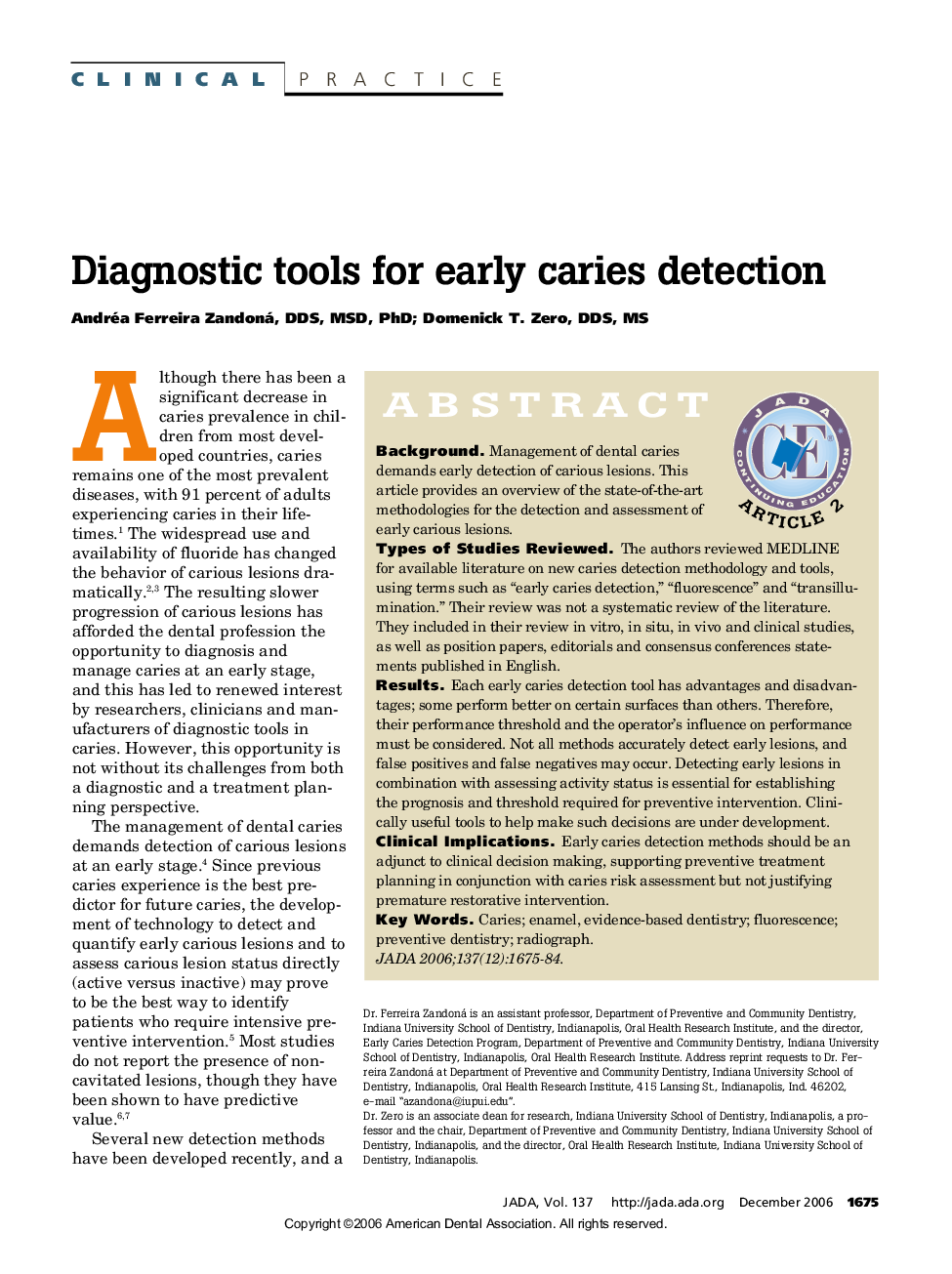| Article ID | Journal | Published Year | Pages | File Type |
|---|---|---|---|---|
| 3139908 | The Journal of the American Dental Association | 2006 | 10 Pages |
ABSTRACT BackgroundManagement of dental caries demands early detection of carious lesions. This article provides an overview of the state-of-the-art methodologies for the detection and assessment of early carious lesions.Types of Studies ReviewedThe authors reviewed MEDLINE for available literature on new caries detection methodology and tools, using terms such as “early caries detection,” “fluorescence” and “transillumination.” Their review was not a systematic review of the literature. They included in their review in vitro, in situ, in vivo and clinical studies, as well as position papers, editorials and consensus conferences statements published in English.ResultsEach early caries detection tool has advantages and disadvantages; some perform better on certain surfaces than others. Therefore, their performance threshold and the operator's influence on performance must be considered. Not all methods accurately detect early lesions, and false positives and false negatives may occur. Detecting early lesions in combination with assessing activity status is essential for establishing the prognosis and threshold required for preventive intervention. Clinically useful tools to help make such decisions are under development.Clinical ImplicationsEarly caries detection methods should be an adjunct to clinical decision making, supporting preventive treatment planning in conjunction with caries risk assessment but not justifying premature restorative intervention.
